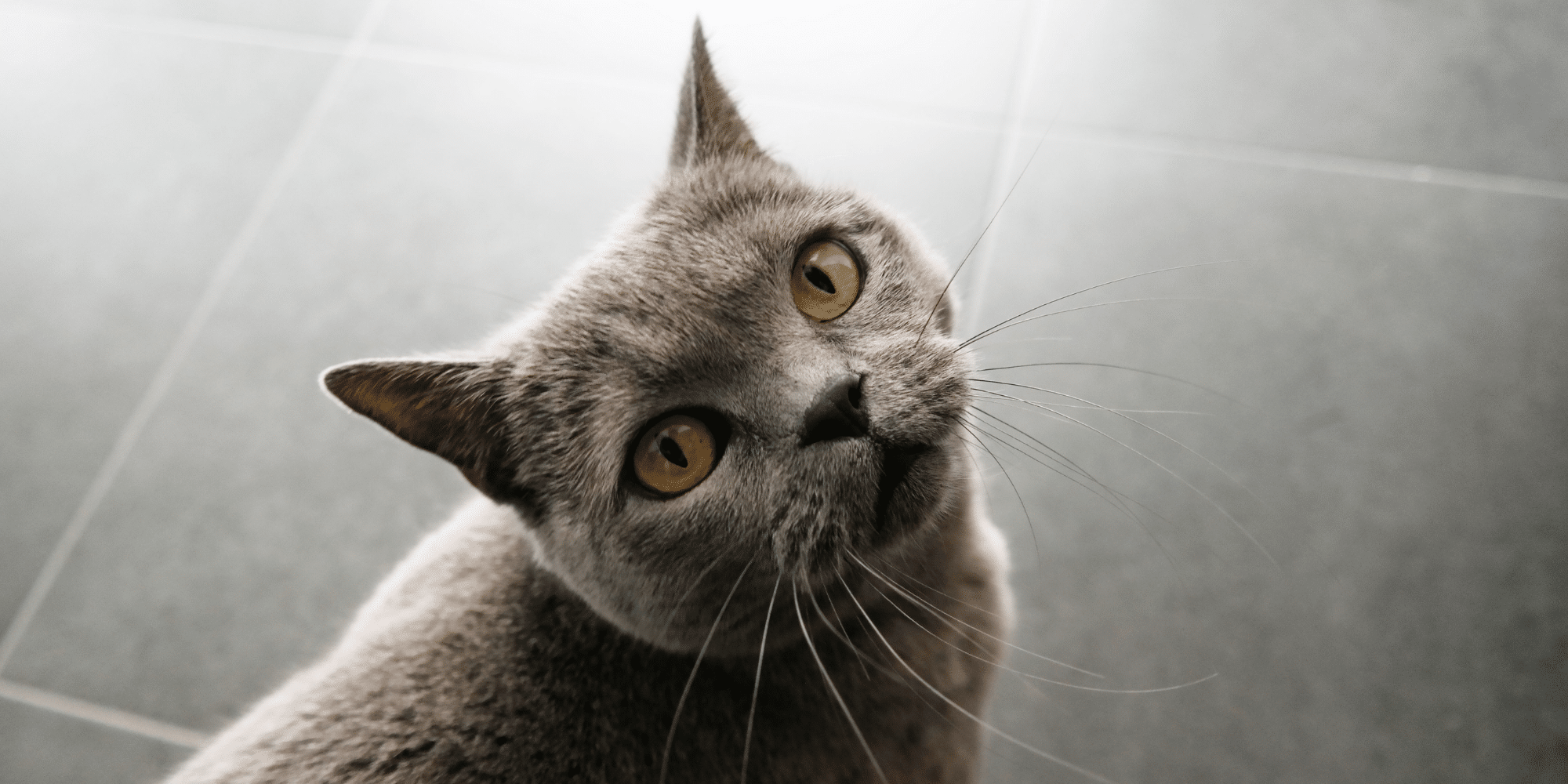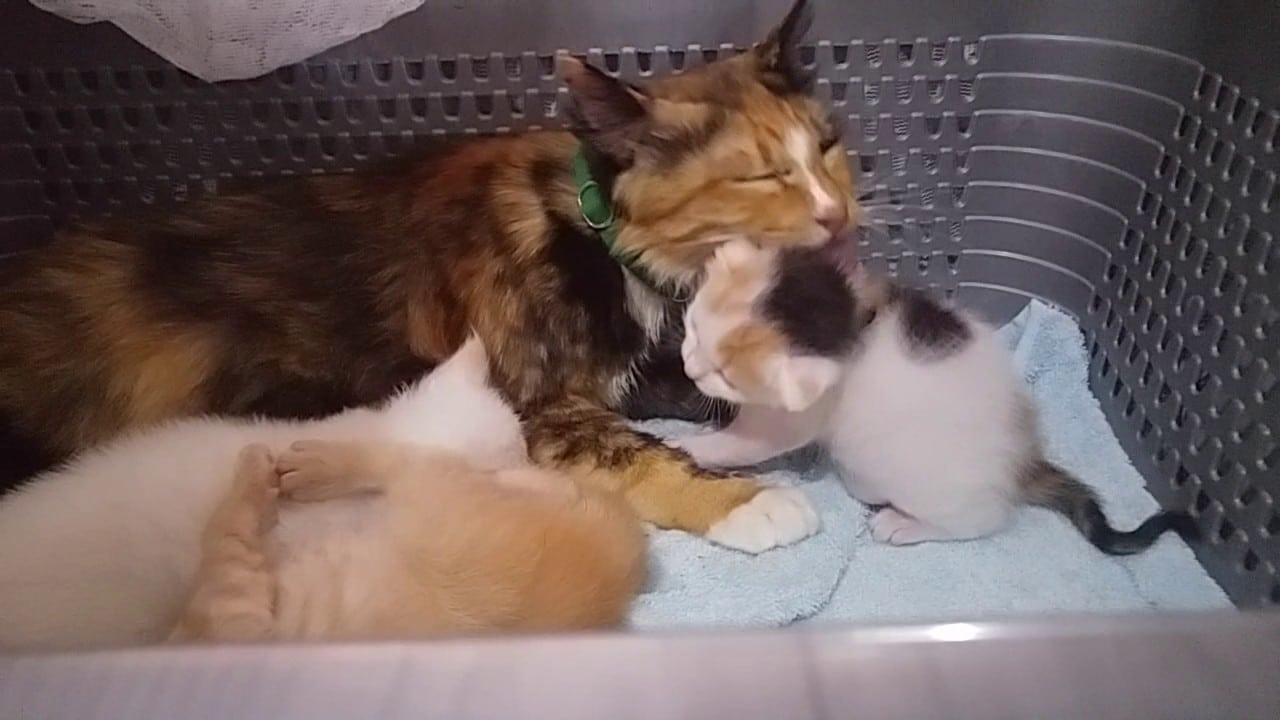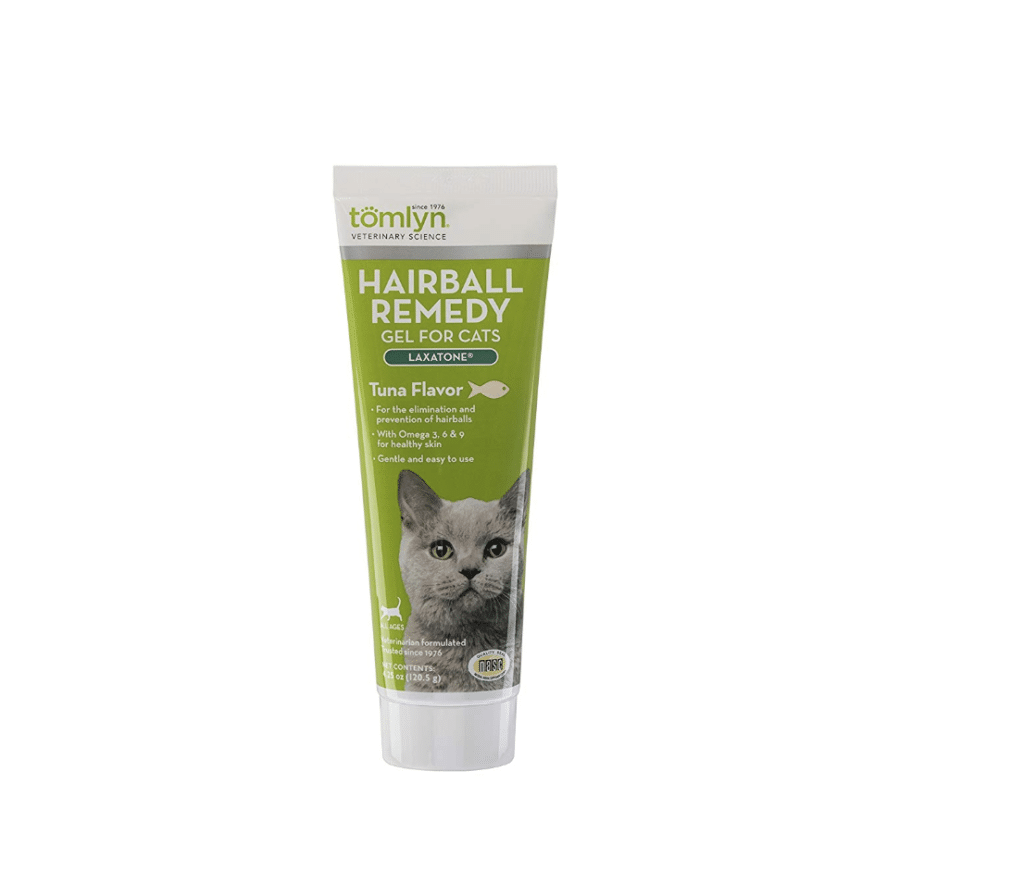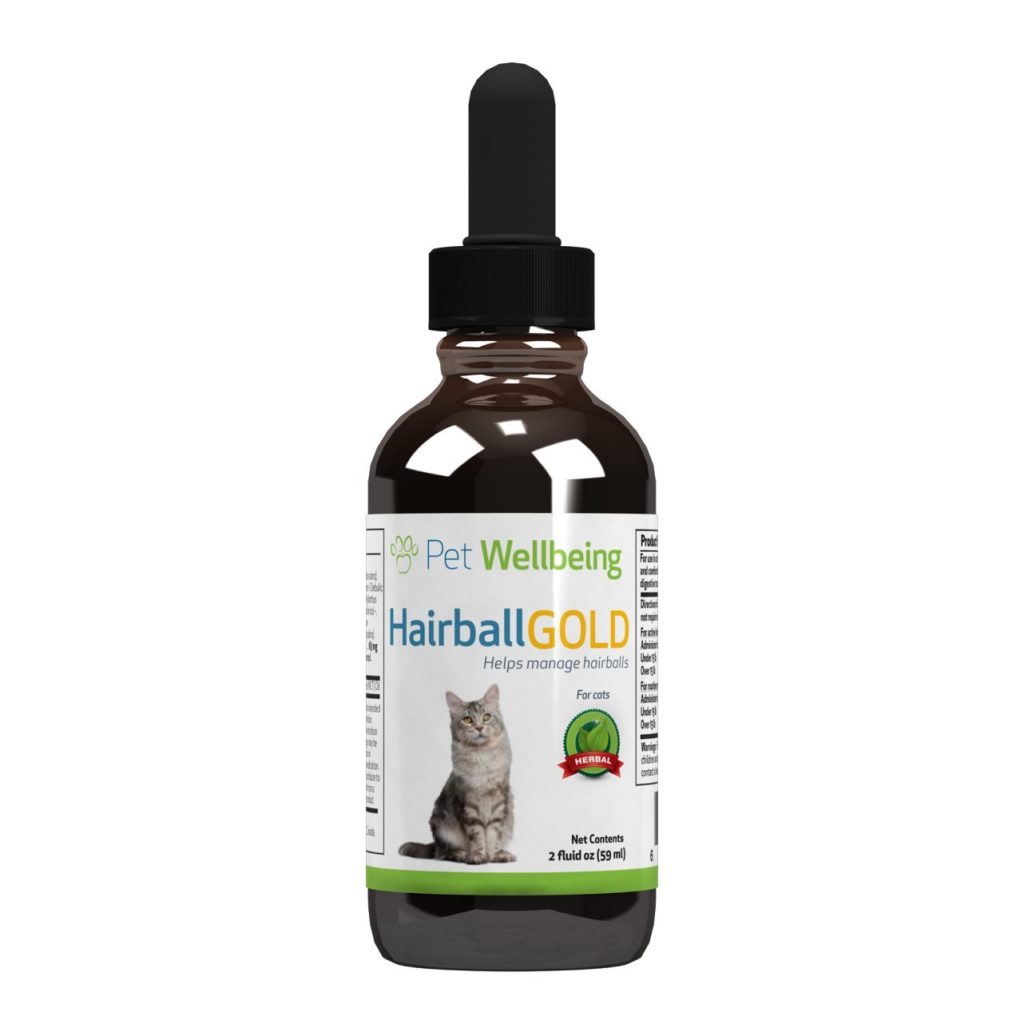- Tomlyn Tuna Flavor Laxatone Gel
- Vet’s Best Hairball Relief Digestive Aid Supplements
- Nutri-Vet Hairball Paw Gel
- Hairball Gold for Cats
It’s the sound every cat owner dreads, “Wheeze, cough, hack, bleeerg.” It’s the sound of your cat’s digestive track trying to rid itself of a hairball. I used to have a humidifier that sort of made the same sound when it bubbled, and it used to wake me up in the night.
While they’re unpleasant to deal with, the fact that your furry friend coughs up hairballs is a testament to his or her meticulous grooming. Long-haired breeds like Maine Coons and Persians are unsurprisingly particularly prone to cat hairballs.
Luckily cat hairballs are marginally less gross to clean up than full-on cat barf but still, it’s gross. Cat hairballs are a familiar thing cat owners deal with, and in most cases, they are not life-threatening.
It’s not uncommon for a cat to regurgitate a hairball once every week or two. Aside from inconvenience to the owner, this is nothing to worry about.
But cat hairballs can cause health issues for your pet including loss of appetite, lethargy, constipation, and diarrhea. In the worst case scenario, hairballs can cause an intestinal blockage in your pet which may mean an expensive trip to the vet and even surgery.
So as with anything, an ounce of prevention is worth a pound of cure and there are plenty of things pet owners can do to lessen the hairball problem. From grooming to food, to medication, if you have a hairy situation, we’ll show you how to remedy your cat’s hairballs.
What Causes Cat Hairballs?
You know how when your cat licks your hand, and their tongue feels like sandpaper? That scratchy feeling is due to the tiny hook-like structures on a cat’s tongue. When a cat licks themselves as a form of grooming, those tiny hooks catch the loose, dead hair.
This is a good thing; it’s part of what those little hooks are meant to do. What happens to that loose hair? The cat swallows it of course.
And most of the time, the dead hair makes its way all through the digestive tract and comes out with the rest of what comes out in the litter box (trying not to be too graphic here!). But not always. The loose hair that remains in the stomach can form into a hairball. Usually, your cat will vomit to get rid of the hairball (“Wheeze, cough, hack, bleeerg”).
If you have a young cat who hasn’t thrown up a lot of hairballs you might think you’ve had a lucky escape but not so fast. As cats get older, they become better at grooming and can remove more loose hair. So if your kittens didn’t have hairballs, your adult cats might.
All of the cats that I’ve had seemed largely unbothered by hairballs but no matter what species you are, throwing up is pretty unpleasant so let’s see what we can do for hairball control.
Prevent Cat Hairballs with Regular Brushing
It stands to reason that the less loose hair your cat has, they less they will swallow. Most cats do a pretty good job of grooming themselves, but you can give them a helping hand by brushing them regularly.
If your cat hates the brush he or she may tolerate these cat brushing gloves better. It’s like a petting with a little something extra.
Too Much of a Good Thing
The fact that cats groom themselves is one of the reasons a cat is an easier pet than a dog. But there can be such a thing as too much grooming. If your cat seems to groom excessively, try to discourage this.
Distract your cat with a new toy. If they still seem determined, use a toy that requires the two of you to play together. It’s a win-win. Less compulsive grooming and more bonding time for you and your furry friend!
Try a Special Food
There are brands of cat food that are specially formulated to reduce hairballs. They’re high in fiber which helps clear the intestinal tract, improves the health of your cat’s coat and minimize shedding.
Everyone Loves a Treat
Some cats are very fussy when it comes to cat food so your pet may not take kindly to a change in brands. If you have a picky eater, rather than switch cat food brands, try a tasty treat.
There are flavored treats that contain fiber and mineral oil that can help prevent the formation of hairballs.
Keep Them Hydrated
Like most people, most cats could afford to drink more water. If your cat is dehydrated, this can make the hairball problem worse. Make sure your cat always has access to plenty of clean, fresh water.
A Little Olive Oil
Just a few drops of olive oil in your cat’s food, up to a teaspoon per week, can help the digestion of furballs. Olive oil can also settle an unhappy kitty tummy and relieve the stomach ache that hairballs can cause.
Olive oil is also good for overall cat health. Not only can it help minimize hairballs, but it can also protect your cat’s skin and reduce inflammation.
And Pumpkin!
Another natural remedy for cat hairballs is canned pumpkin (be sure to get the plain pumpkin and not pumpkin pie filling). The pumpkin is high in fiber and can help pass hairballs.
Add one to two tablespoons to your cat’s food each day or a few times per week.
Best Hairball Medications
Sometimes all of the prevention and home remedies just aren’t enough to deal with a stubborn furball problem, and you need a product specially designed to tackle things.
In that case, these are the best hairball products that you can try.
This gel can help with the hair your cat’s hairballs and constipation they can cause. This product is a stimulant laxative, and while there are versions that require a prescription from your cat’s vet, this one is available over the counter. It’s made with mineral oil and vegetable oils in a tuna-flavored gel which will appeal to even the pickiest palates.
This supplement is made from all natural ingredients like psyllium (for fiber), slippery elm bark, marshmallow root, and papaya. The product helps support a cat’s digestive system and lubricate the hairballs (that sounds so gross!) so they’re easier to pass. The supplement is in tablet form, and the dose is two tablets a day. These tablets can be broken up and sprinkled over the cat food and are chicken flavored.
This gel can both help prevent and treat hairballs. The gel is a lubricant that coats the hair your cat swallows to allow for easy passage through a cat’s digestive system. It also lubricates the colon which helps keep stools soft for easier passing and keep the cat’s digestive tract hydrated. The gel comes in salmon and chicken flavors and is easy to use.
This product is made with certified organic herbs that help lubricate a cat’s digestive tract and settle their stomach. You can use the dropper to precisely measure the appropriate dose over your cat’s food depending on your his or her size and whether you’re using it to help your cat pass a hairball or as a preventative measure.
When to See the Vet
In most cases, you don’t need to see a vet for a hairball problem. A good hairball remedy will resolve or at least reduce the problem. But hairballs can be a problem if the amount of hair your cat has ingested is too much to pass. The worst case scenario is an intestinal blockage, something that does require a vet visit.
If your cat seems to have a loss of appetite and refuses to eat for more than a day, take him or her in. The same goes if your cat is hacking and hacking and not bringing anything up. If they are also not going poo, this can also be a sign of a blockage.
If your cat seems lethargic, that can be another indication (although lethargy can be a sign of many things so look for the other signs of a potential blockage before settling on that as a cause). Gently palpate your cat’s tummy. If you feel a hard spot, it could be a blockage.
The vet will do various diagnostic tests possibly including blood work, X-rays, or an ultrasound. If there is a blockage, these tests can show where it’s located. Your vet may keep your kitty for a few days and give them laxatives to try to get the blockage to pass.
If the laxatives don’t work, surgery may be required.
It Could Be Worse
While cat hairballs are not the most pleasant aspect of pet parenthood, in the grand scheme of things, they’re pretty small potatoes, for both, you and your cat. There are a lot of worse problems you could deal with, and in the vast majority of cases, they aren’t particularly harmful or upsetting to your cat.
[tweet text= “There are two means of refuge from the miseries of life: music and cats.”]
And those cuddles and purrs make owning a cat worthwhile. Meeeoow!







